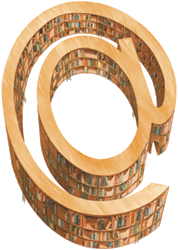ARIADNE
Thanks to the increasing use of information technology (IT) in archaeology, digital data sets are constantly being created by individuals, research teams and institutes. An EU-funded initiative will help integrate this huge but fragmented body of knowledge, thereby facilitating its use by scholars.
Archaeological data is scattered amongst a wide range of collections, journals, and inaccessible and unpublished fieldwork reports. Collating and sharing this information will help to create a new community of researchers eager to exploit the benefits of IT and incorporate it into established archaeological research methodology.
The aim of the ARIADNE project is to integrate archaeological information. It facilitates cross-border access to data centres, tools and guidance and the creation of new web-based services founded on common interfaces to data repositories. This stimulated new areas of research in archaeology by allowing researchers to compare between data from ongoing and past field and laboratory work.
Project partners have collected and structured information regarding existing archaeological data sets and reference tools. This information is managed by the ARIADNE Registry, a database organised according to the ARIADNE Catalogue Data Model (ACDM). The ACDM is derived from current standards and adapted to the specific needs of archaeological research and is intended for public access. In addition, current standards used in archaeological data sets have been reviewed and analysed.
Other activities concentrated on the preparation of a Linked Open Data system and set-up of language processing tools for dealing with large amounts of unstructured textual data.
The ARIADNE project will therefore greatly help researchers to study the enormous wealth of data produced by archaeological records in Europe.
ICCU’s contribution is based on gathering contents coming from Italian archaeological centres and archives and on developing the semantics for accessing and retrieving data in a multilingual environment. ICCU coordinated a large group of experts from the Central Institute for Cataloguing and Documentation (ICCD), the General Directoratesof Archaeology, the Special Superintendence for the Colosseum and the Archaeological Heritage of Rome (SSCol), the Department of Computer Science of the University of Verona.
See the project’s website for further information: http://www.ariadne-infrastructure.eu/ or write to: ic-cu@beniculturali.it
CERL - Consortium of European Research Libraries
The CERL - Consortium of European Research Libraries – which the Institute is a member of, together with another 213 leading European libraries and institutions – aims to encourage the sharing of resources among research libraries and the dissemination of knowledge on the pre-1830 European printed heritage.
The Consortium was established in 1992 thanks to an initiative spearheaded by numerous European research libraries with the primary goal of creating a database of books printed in Europe during the era of the manual printing press; in June 1994 it obtained a legal status; since 1997 Heritage of the Printed Book Database (HPB) is available to researchers.
The database is fed by record files provided by the Consortium libraries and institutions; these files are arranged together so as to make them all accessible through a single search. Consultation is currently reserved to CERL member institutions. Over the years, ICCU has provided about 140,300 records to the HPB database referring to the ancient books owned by about 175 of the 800 SBN libraries that catalogue books printed between 1450 and 1830.
Presently, the HPB database is hosted in Göttingen, at the data processing centre (VZG) of the Gemeinsamer Bibliotheksverbund.
Over the years, CERL has launched and supported other projects, such as the CERL Thesaurus, an integrated database that collects authority records from CERL libraries and institutions with: places of printing, publishers and printing presses names of persons and institutions on material printed between 1450 and 1830.
ICCU contributed to this database with 2,512 EDIT16 authority records sent to CERL in 2003 and in 2009; in the future, ICCU plans further contributions to the Thesaurus in the coming years.
The CERL Portal, which provides an integrated access to databases on manuscripts, printed works, photographsand other materials, also includes data on manuscripts held in Italian libraries from the Manus on line database: records provided by ICCU presently amount to 53,000, but more are to be sent in the near future.
In the past, through a cluster system, ICCU could extend its privileges to other 15 institutions, which included:
- Biblioteca Universitaria Alessandrina – Roma
- Biblioteca Casanatense – Roma
- Biblioteca Vallicelliana – Roma
- Biblioteca Angelica – Roma
- Biblioteca di Storia Moderna e Contemporaria – Roma
- Biblioteca Universitaria – Bologna
- Biblioteca Palatina – Parma
